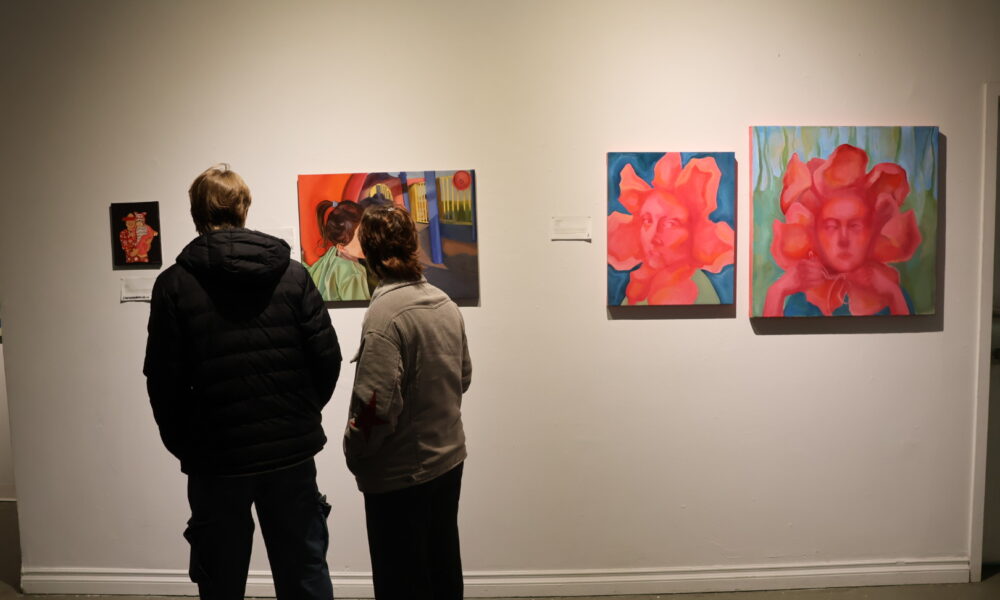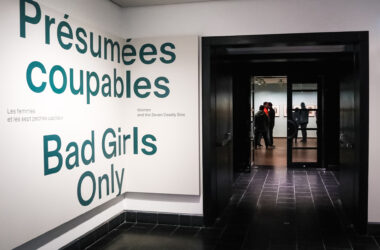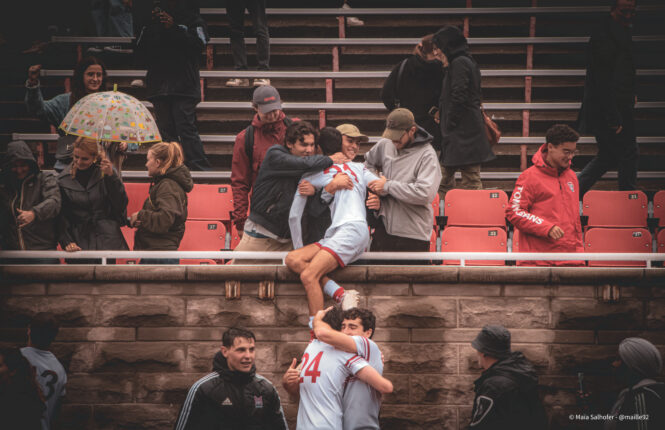Strolling down boul. St.-Laurent towards the McGill Fine Arts Commission (FAC) exhibition, I momentarily regretted never completing that Art History minor. Not being an educated scrutinizer of fine art, how could my perspective add anything to the artistic conversation? But as the bubbling atmosphere of jazz, artists, and gallery-goers swiftly immersed my visual and auditory senses, I felt that the space demanded nothing more than true appreciation and openness to engage with the surrounding creativity. I became aware of how much artistic perception relies on intuition instead of critical analysis and grew to appreciate the value in the singularity of each artistic expression.
The exhibition, titled Mirage, ties visual art to the naturally occurring optical phenomenon of a mirage, exploring the fine line between illusion and reality.
“The whole idea of Mirage is that everyone has their own reality, everyone sees something different, […] and that in itself is so unique,” Diya Senghera, FAC Co-Commissioner, explained in an interview with The Tribune.
The exhibition brings together a wide range of perspectives, encouraging viewers to explore the boundary between imagination and reality through their interaction with the artists’ ideas and the theme of illusion. Despite the many interpretations each painting, sculpture, and film may offer, Mirage’s presentations diversify this range of interpretations even more. Mythical realms, imagined spaces and undefined objects challenge the viewer’s visual perception and play a role in most of the exhibition’s fine art.
The majestic emanation of Mia MacLeod’s oil on canvas, titled Free Fall, caught my eye from afar. Its deep blue colour—a thematic element in the exhibit connecting art to the natural phenomenon of the mirage—and the intricate fusion of physicality and lightness in her figures are central to the exhibit’s impact. MacLeod describes her artistic vision as a combination of surrealism’s style with expressionism’s colours.
“I love spaces that aren’t settled in reality but have a mystical, magical quality to them,” MacLeod said in an interview with The Tribune.
Kat Sun’s glazed ceramic sculpture, Reverie, plays with space differently. Its interwoven shape has an uncertainty to it; it appears to be twisting and decomposing at the same time.
Maya Farres’s digital art similarly relates to the ambiguity between what we perceive as our imagination and the uncertainty of physical space. In Sofishticated, a shining fish swims above a young woman’s head, bubbles rising, in a space resembling water. In her inscription, the artist explains her goal to express the discernible truth that can be found in mind wanderings.
“The piece asks the question whether the fish we swim with are subtle reflections of the physical world, or simply just daydreams,” Farres wrote.
For some artists, Mirage relates to the illusion found in mirrors and, thus, in appearance. Phaedra’s vividly coloured painting When the Mirror was Play, depicting a young girl and her mirrored reflection in a playground setting, is part of her larger series concerning mirrors.
“The mirror transitions in its meaning as we get older to points of insecurity and judgment,” Phaedra said in an interview with The Tribune.
Winnie-Grace Melchor’s work Lost in Reflection similarly explores the relationship to the mirror by discussing beauty standards, society’s expectations, and consumerism.
The diversity of artworks does not end here; Aia Segal’s Self Performance displays a room filled with a jumble of imagined, fictitious objects and material items through a unique combination of oil pastel and embroidery on cotton fabric. On top of that, Mirage’s immense diversity in themes, styles and materials goes beyond visual art by incorporating a performance from Mosaica, one of McGill’s oldest dance companies.
“There are so many different artists at McGill, and that is part of what we want to celebrate,” Katherine Squitieri, FAC Co-Commissioner, explained to The Tribune.
Truth be told, this experience doesn’t need an Art History minor because, ultimately, it is our own perspectives that create meaning in art and bring it to life.









